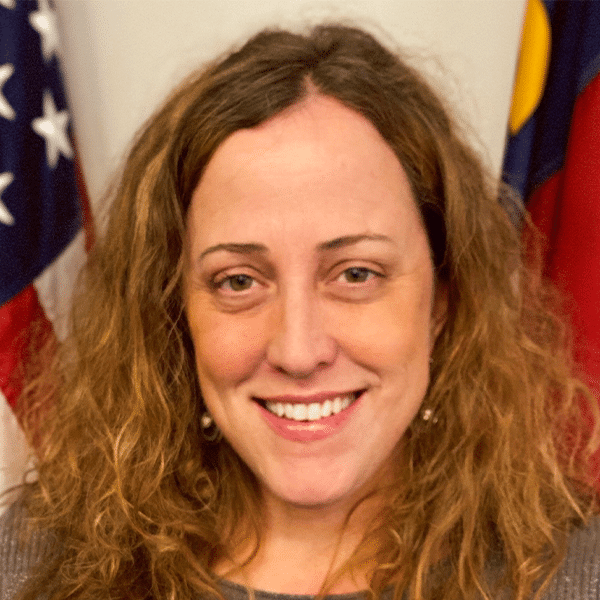Eric Frederick, the Chief Connectivity Officer for the Michigan High-Speed Internet Office is supremely confident. “I do believe it’s going to be enough,” he said in an interview with Telecompetitor when asked whether the $1.5 billion in BEAD funding allotted to the state will be enough to get broadband to everyone.
The healthy allocation leads Frederick to exclaim rather confidently that Michigan’s unserved and underserved will be largely connected with fiber.
“We’re focused on fiber in Michigan, so we have infrastructure that meets the needs of today as well as thirty years from now,” he said.
Challenging Times
Currently Michigan is in the in the rebuttal phase of the BEAD challenge process, a 40-day process that follows the initial challenge phase that ended in early May.
Frederick reports that many of the nearly 200K challenged locations will be validated when version 4 of the FCC’s broadband map comes out. He also noted that the coverage that fixed wireless providers are claiming is receiving a lot of attention.
The NTIA has said that if a provider plans to deploy service to a location by June 30, the location should be counted as served and therefore ineligible for BEAD. But Michigan is extending that date to December 31 for fiber-optic networks. If fiber service is planned to a location by that date, the state will count the location as served.
The entire challenge process, including challenges, rebuttal and adjudication, should take no more than 120 days. To comply with that timeline, the adjudication phase of Michigan’s challenge process will wrap up before July 1.
Moving Target
Michigan’s number of unserved and underserved keeps changing, in large part because of grant funding awarded to providers in the state, Frederick explained. For example, Michigan’s RDOF funding was the third highest in the nation. Additionally, Frederick credits enhanced ACAM for taking another 50K locations off the under/unserved map.
Late last year, the state announced grant awards funded through Michigan’s allotment from the federal Capital Projects Fund (CPF), and more awards will be announced shortly. Michigan used its $250 million in CPF to create a program dubbed ROBIN (Realizing Opportunity with Broadband Infrastructure Networks) that has taken an additional 70K broadband serviceable locations (BSLs) off the map.
All of this leaves Frederick and his team with what he estimates to be no more than 250K BSLs to reach (pending the results of the challenge process). Approximately 185K of these are unserved locations that the office committed to reaching with a fiber connection.
That Pesky ‘Shot Clock’
A tenet of the BEAD program is that once Volume 2 is approved by the NTIA, the 365-day deadline for awarding grants starts.
As such, many states, including admittedly Michigan, are in no hurry to have Volume 2 approved. As Frederick explained, “We are not even done with the challenge process, so I am not ready [for Volume 2 to be approved] until our challenge process is finalized and approved by NTIA. I cannot afford the ‘shot clock’ to start on me while I am waiting for approval on the challenge process from the NTIA.”
He went on to say that the Michigan broadband office is taking its time with curing Volume 2. “It’s very intentional because when we do the math, we are going to need every one of those 365 days to run the BEAD process,” he said. “Once it’s approved, we can get into all the fun stuff . . . like applications and project selections.”
Can We do This? YES Michigan!
Frederick s confidence that Michigan’s BEAD funding will be sufficient to achieve universal broadband doesn’t seem to be misguided.
“Analysis from the ROBIN program and other models shows us this is doable,” he said.
This comes with one very big caveat, however. “The trick is to ensure that all the other federal programs work and cover the areas they are intended to,” Frederick noted. “It’s a lot of money, we have to be efficient, but as long as ACAM and RDOF cover what they say they will, we can do this.”
He went on to express that there is clearly interest from carriers as applications for the CPF/ROBIN program netted grant applications for five times as much funding as was available. Funding requested totaled $1.1 billion.
Frederick anticipates that the state will begin accepting BEAD applications in September. The broadband office is readying a preregistration process that will start in late June.
Factoring in the 365-day selection process and Michigan winters, laying fiber for BEAD networks won’t start before 2026.
He anticipates an initial round of funding focused on fiber, and a second round that allows other technologies, followed by negotiations and a “cleanup” round. If there is anything left after that (perhaps for 78 broadband serviceable locations on Isle Royale National Park in middle of Lake Superior), alternative technologies will be used.
Playing Hexagonal Chess with Its BEAD Service Areas
Michigan’s service areas will be defined in a grid with hexagonal project areas a mile and a half in diameter.
“BEAD is not like any other state grant program ever, as the goal is 100% universal access. We’re not pitting county versus county, we have to get everywhere,” said Frederick.
Applicants to Michigan’s BEAD program will select hex’s, with a requirement to deliver service to every unserved and underserved location within the hex.
“The hexagonal model allows applicants to be very surgical with how they design their networks,” espouses Frederick.
He added that “Our model doesn’t split road center lines, so we won’t have one provider building down one side of the street while another builds down the other.”
No ‘Field of Dreams’
Founded in July of 2022 by Frederick, Michigan’s High-Speed Internet Office is staffed by ten individuals working virtually throughout the state. Frederick explains that the staff is tied together by a few things including his mission statement, ‘Leveraging Technology to Improve Quality of Life.’
“We’re not here just to build networks, it’s our job to educate and inform people WHY they need better internet,” explains Frederick. “Build it and they will come does not work with broadband the way it does in movies with a ballpark in the middle of Iowa. It’s not about the hardware or the technology, it is about how people can use it.”
To ensure everyone in his office is on the same page, literally, the staff shares a Word document to reinforce why staff members believe in the work they’re doing. It now includes dozens of reasons, including:
- For every student who had to sit outside a McDonalds to do homework during the pandemic
- Every veteran that wants to keep in touch with their fellow service members
- For every business that wants to expand their customer base
- For every stay-at-home mom who wants to earn a little bit of extra money by starting her own business
- For a homebound resident who still wants to participate in civic activities
This list is an evolving document to which any staff member can add.
An Eagle Scout and His Wings
“I’ve been working on this for a long time,” explained Frederick. “I found some of my grad schoolwork from almost two decades ago and with it a poster from my presentation at a national conference – from 2005 — that I titled “Michigan: Number 1 for Broadband?”
Since receiving his master’s in urban planning from Michigan State University, Frederick has been steeped in broadband advocacy, including more than a decade with Connected Nation.
He explains that his heart for public service dates to his days in the Boy Scouts where he earned the highest honor of Eagle Scout. “Serving others is how I grew up. Part of the Scout Oath is to ‘help other people at all times,’ and right now, this work is how I can do that.”
The Michigan native is noticeably excited about what he calls “a once in a generation opportunity to change peoples’ lives.”
Additional information about Michigan broadband, including links to state funding resources, awards made and state-specific Telecompetitor coverage, can be found on Telecompetitor’s Broadband Nation web page for the state.



